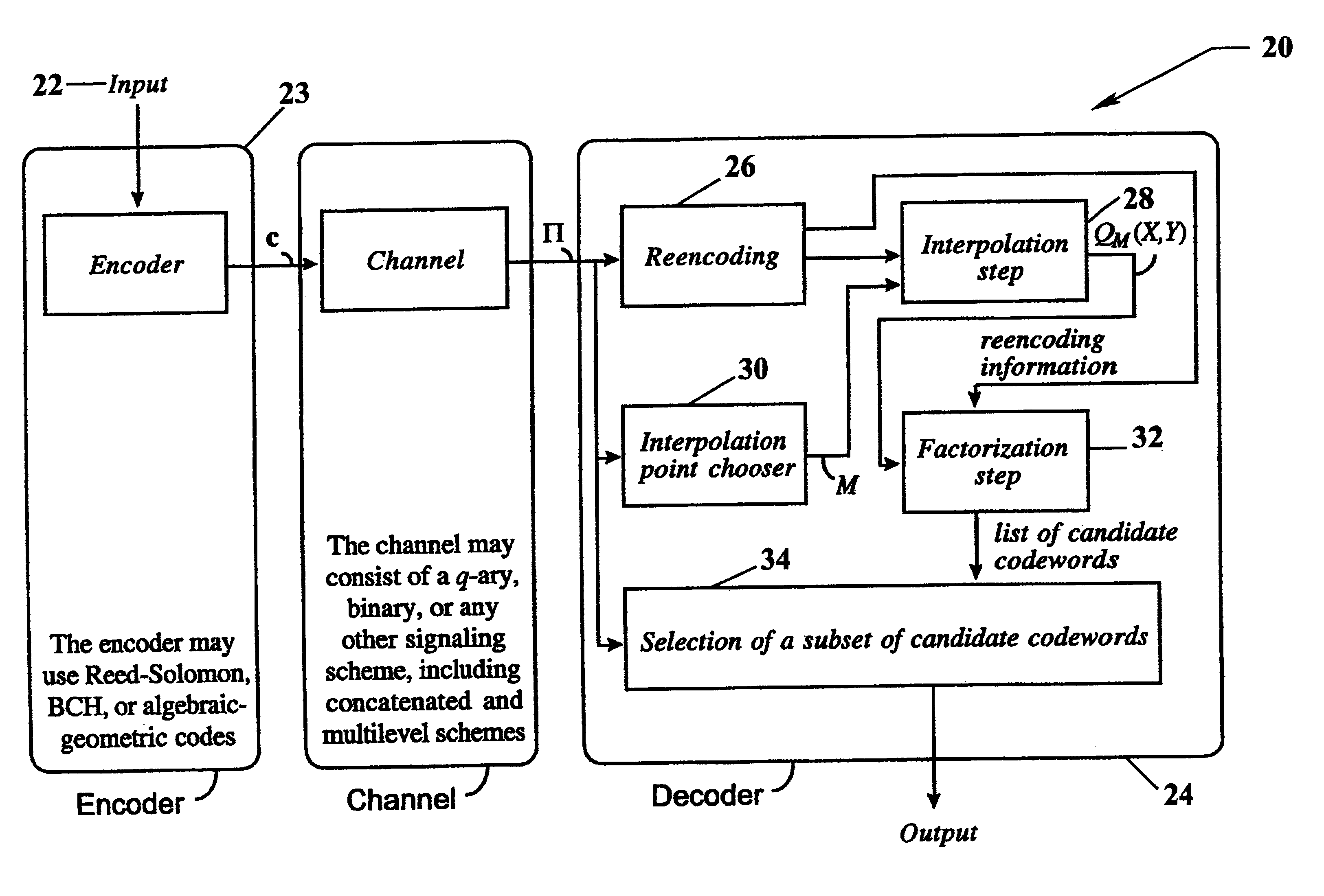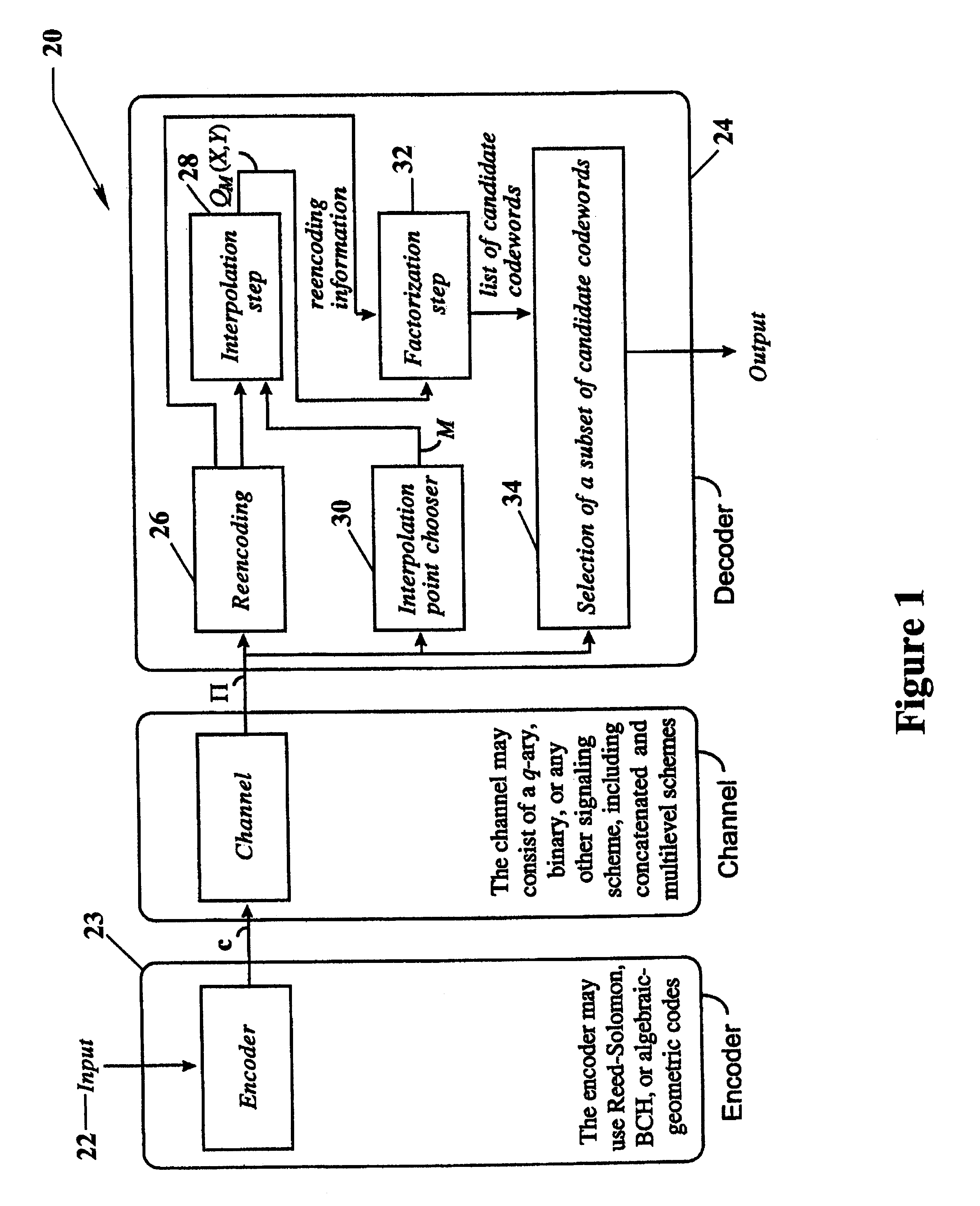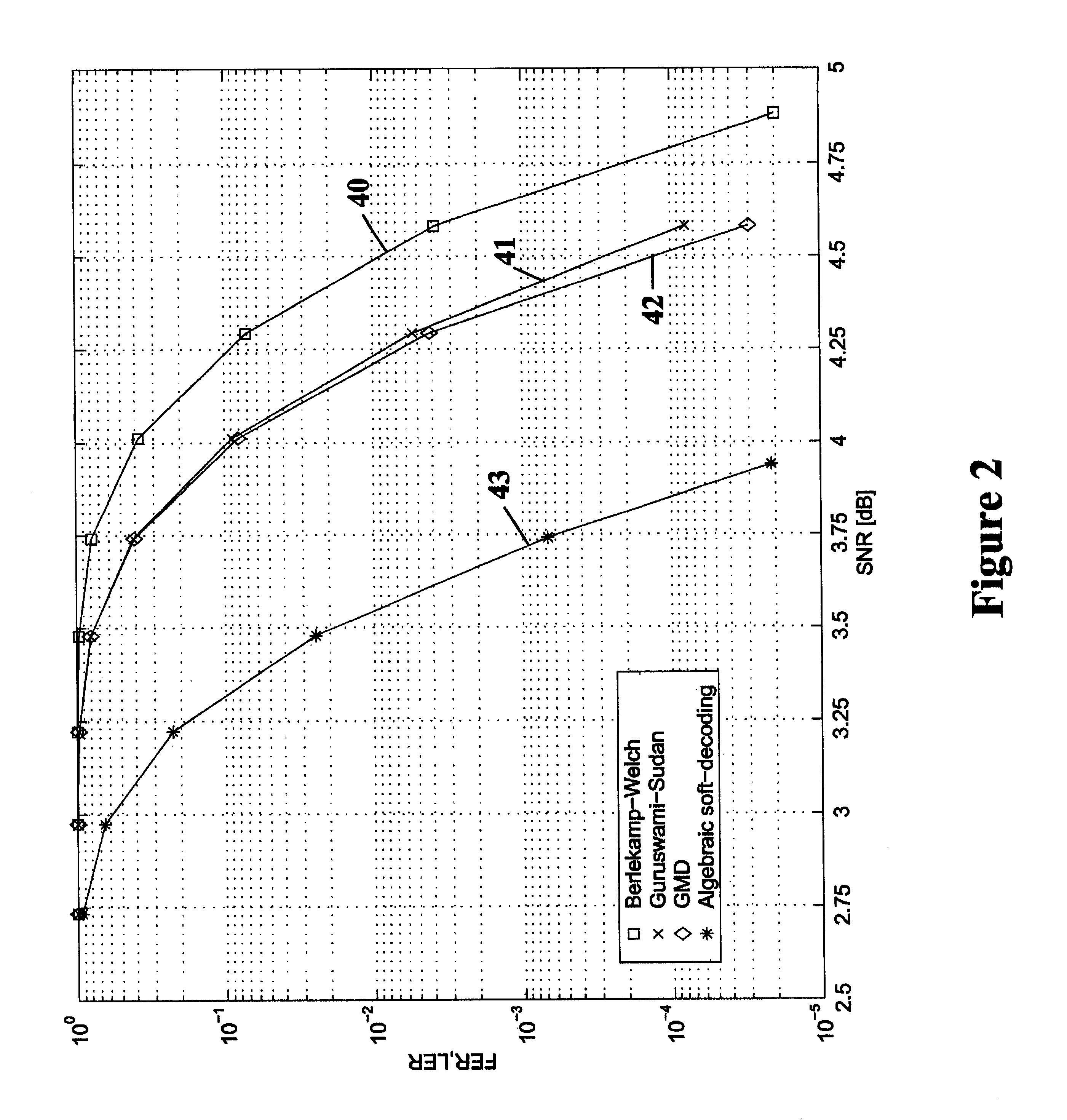Algebraic soft decoding of reed-solomon codes
a technology of reed-solomon and algorithmic soft decoding, which is applied in the direction of code conversion, electrical equipment, code conversion, etc., can solve the problems of channel noise almost always continuous, techniques that cannot achieve decoding beyond half the minimum distance of codes, and decoding beyond the error-correction radius
- Summary
- Abstract
- Description
- Claims
- Application Information
AI Technical Summary
Benefits of technology
Problems solved by technology
Method used
Image
Examples
example 1
shows how a soft-decision decoding algorithm for Reed-Solomon codes might work. The "soft" reliability information will enter the decoding process through the choice of interpolation points and their multiplicities. Given a reliability matrix .PI., the key question is how to determine these points. An answer to this question is provided in the next section. In the remainder of this section, we characterize the proposed soft-decoding algorithm for a given choice of interpolation points and their multiplicities.
A convenient way to keep track of the interpolation points and their multiplicities is by means of a multiplicity matrix. A multiplicity matrix is a q.times.n matrix M with non-negative integer entries m.sub.i,j. The first step of our decoding algorithm consists of computing the multiplicity matrix M from the reliability matrix .PI. (see Algorithm A of the next section). The second step is the "soft" interpolation step, which may be expressed as follows.
Note that while the biva...
example 2
to Example 1 of the previous section, consider the code {character pullout}.sub.5 (5,2) given by (10) and the reliability matrix .PI. in (11). Suppose we restrict the cost of the multiplicity matrix to 14, that is, we wish to find
M(.PI.,14)=argmax.sub.M.di-elect cons. {character pullout}.sub.(14)
We construct a multiplicity matrix M by a greedy iterative process, starting with the 5.times.5 all-zero matrix, and requiring at each iteration that the newly chosen interpolation point maximizes the increase in the expected score normalized by the number of additional linear constraints (the increase in cost). This process is explained in detail in the Summary part of this specification.
Table 1 shows the sequence of chosen interpolation points. Observe that the column that contains the ratio of the increase in the expected score to the increase in cost is strictly decreasing. The resulting multiplicity matrix M is described in equation (12) of Example 1 and in the Summary part of this spe...
PUM
 Login to View More
Login to View More Abstract
Description
Claims
Application Information
 Login to View More
Login to View More - R&D
- Intellectual Property
- Life Sciences
- Materials
- Tech Scout
- Unparalleled Data Quality
- Higher Quality Content
- 60% Fewer Hallucinations
Browse by: Latest US Patents, China's latest patents, Technical Efficacy Thesaurus, Application Domain, Technology Topic, Popular Technical Reports.
© 2025 PatSnap. All rights reserved.Legal|Privacy policy|Modern Slavery Act Transparency Statement|Sitemap|About US| Contact US: help@patsnap.com



